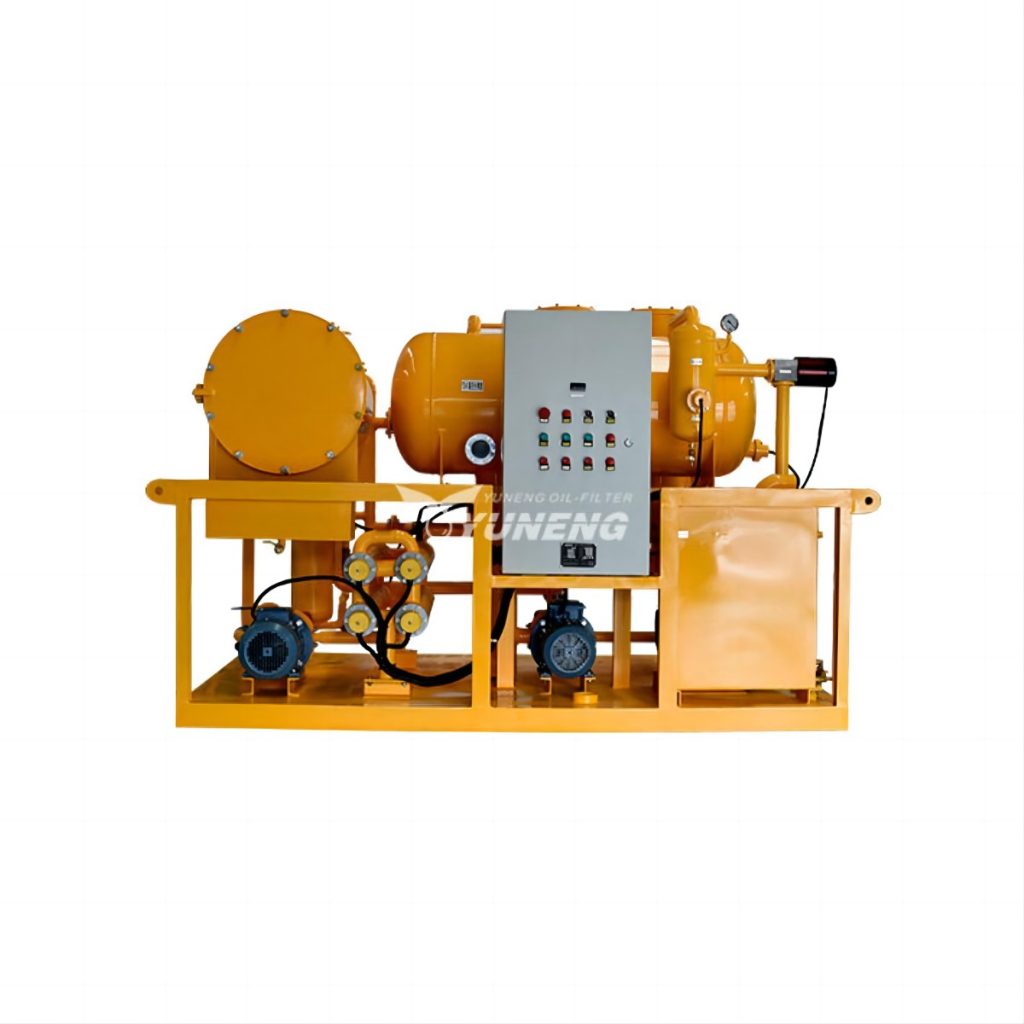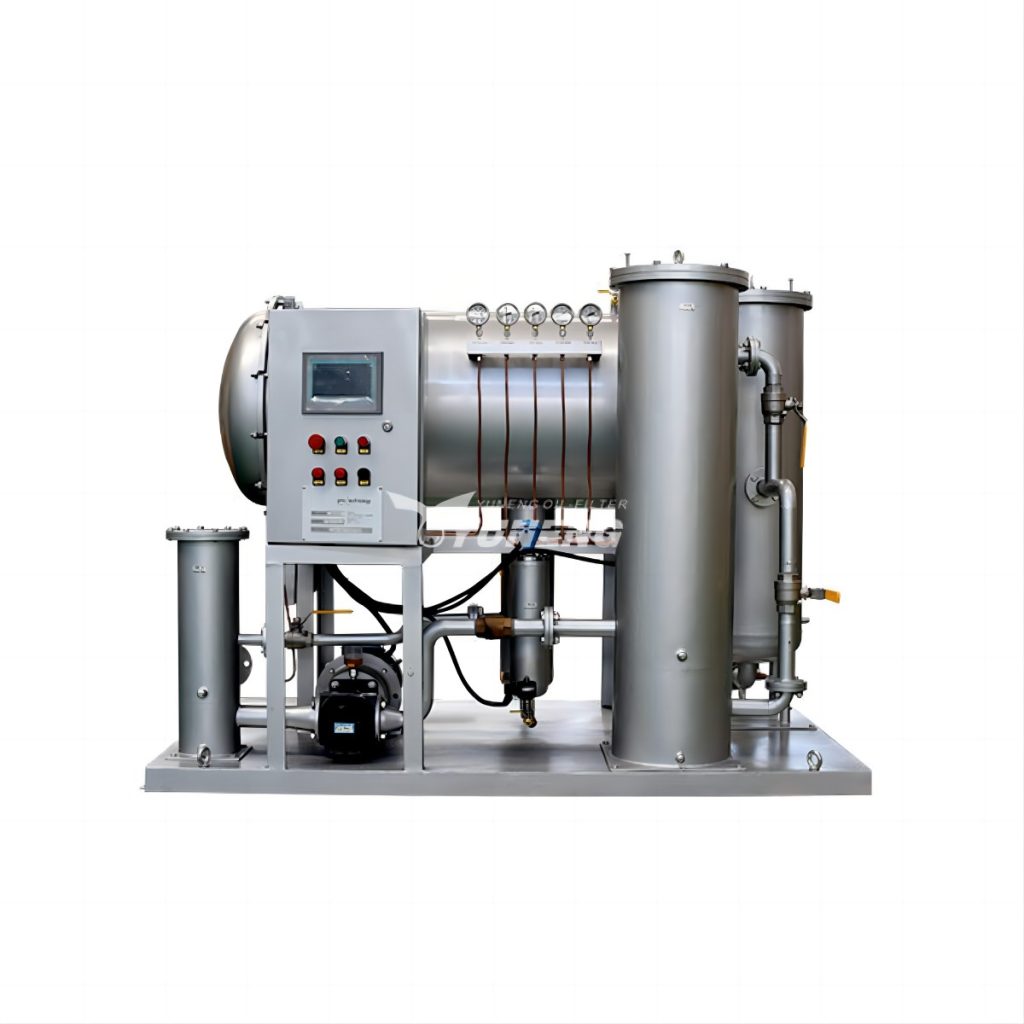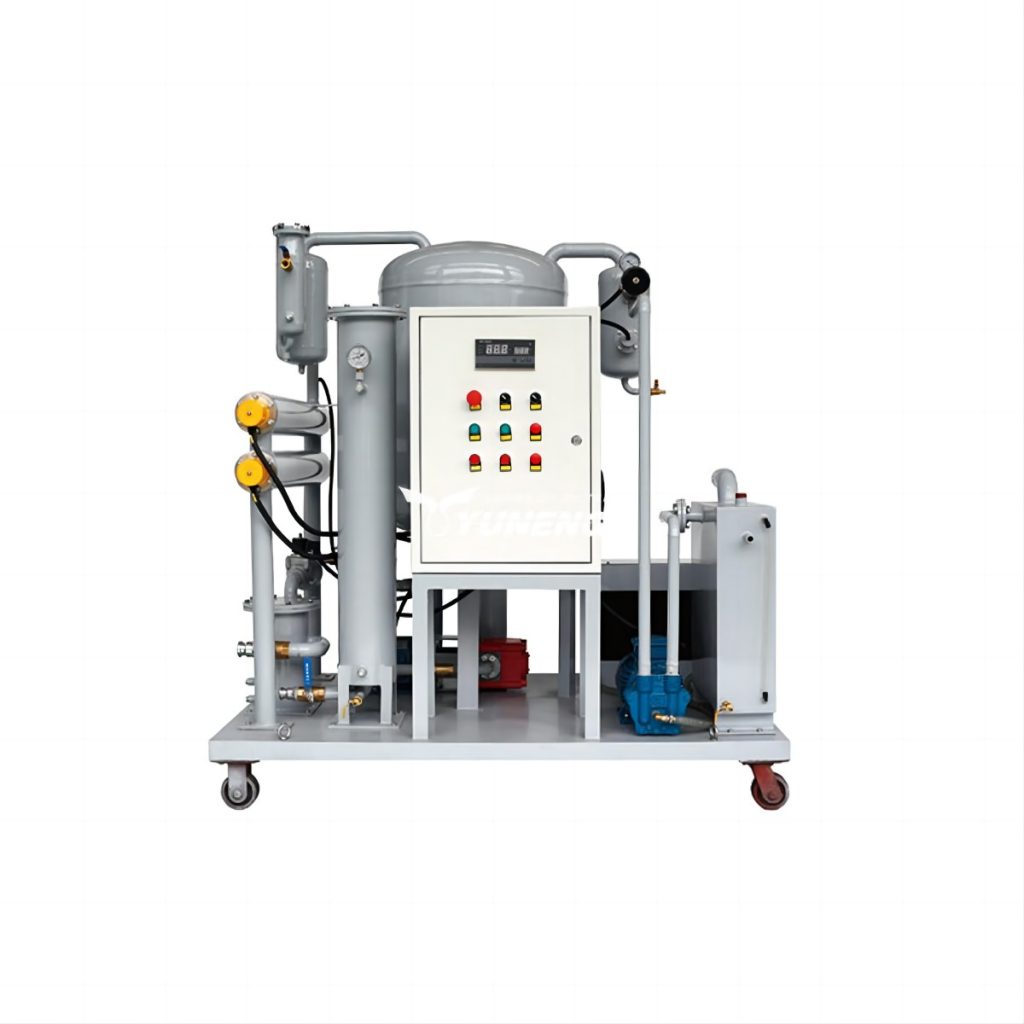Lube Oil Purifier Working Principle Guide: Extend Oil Life and Boost Equipment Performance
As a contaminant in lubricating oils, water can cause many problems. For example, water can cause the viscosity of lubricating oil to change and lose its lubricating effect, the vaporization of water can easily lead to cavitation of the pump, and water can produce sediment with many additives. The most commonly used dehydration methods are the gravity sedimentation method, centrifugal method, vacuum dehydration method, adsorption method, and coalescence method, etc. This article mainly introduces the coalescence dehydration technology lube oil purifier.
JT series lubricating oil coalescence dehydration oil purifier adopts “coalescence separation” dehydration technology to solve the problem of excessive water content in various oils.
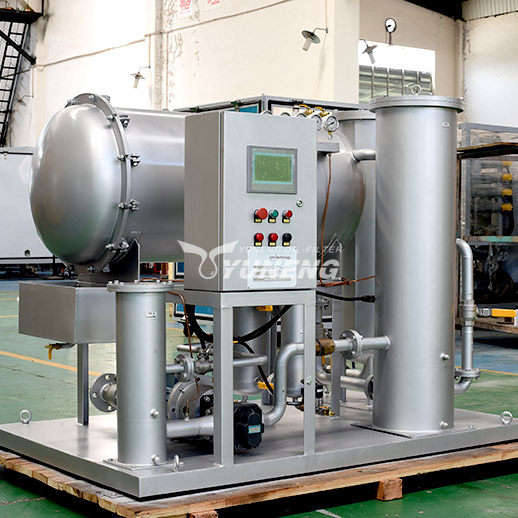
What is Coalescing Separation Dehydration Technology?
Coalescing separation dehydration technology is a two-stage process for removing water from oil mixtures, primarily employed in industrial contexts. This technology leverages the inherent differences in physical properties between water and oil and utilizes specialized filter elements to achieve efficient separation.
Stage 1: Coalescence Filtration
- Coalescing filter element: This element comprises intricate channels or membranes constructed from materials specifically designed to promote droplet agglomeration. As the oil-water mixture flows through these channels, finely dispersed water droplets encounter the filter media’s surface.
- Physical effects: Surface properties of the media, such as hydrophobicity (water repulsion) and surface tension, encourage the coalescence (merging) of water droplets. This effect creates larger, more easily separable water droplets.
- Accumulation: Coalesced water droplets continue to collide and combine within the filter element, leading to the formation of even larger droplets driven by gravity.
Stage 2: Separation Filtration
- Separation filter element: This element follows the coalescing stage and serves the final separation task. Its design depends on the specific application and water content but typically employs media with precise pore sizes.
- Filtration: Larger water droplets formed in the first stage encounter the separation filter. Their size prevents them from passing through the pores, effectively trapping them within the element.
- Clean oil outflow: Dehydrated oil, devoid of the now-trapped water droplets, passes through the pores and exits the separation filter as the final product.
Advantages of Coalescing Separation Dehydration
- High efficiency: Effective removal of water from oil, even at low concentrations.
- Low maintenance: Filter elements are readily replaceable, minimizing downtime for cleaning or regeneration.
- Versatility: Adaptable to a range of oil viscosities and water volumes.
- Environmentally friendly: Reduces usage of chemicals compared to some competing dehydration methods.
Applications
- Oil and Gas Processing: Dehydration of produced water from hydrocarbon reservoirs
- Lubrication Systems: Removal of water contamination from industrial lubricants
- Fuel Processing: Dehydration of aviation and transportation fuels
- Chemical Manufacturing: Removal of water from process streams in various chemical production processes
What is the Working Procedure of the Lube Oil Purifier?
After filtering out the particles in the oil from the primary filter, the oil enters the coalescing separator. Through the four processes of filtration, coalescence, sedimentation, and separation, the function of dehydration is finally realized.
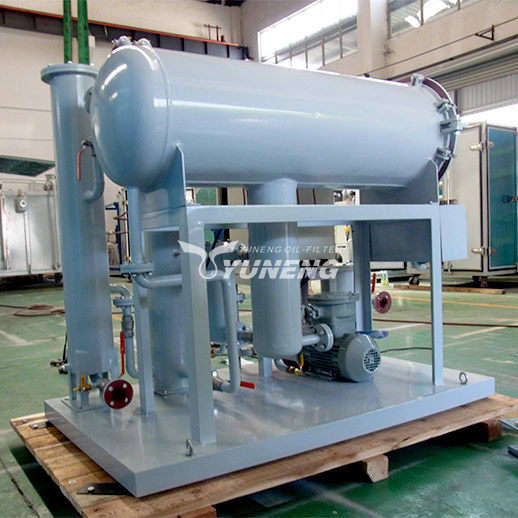
About Particle Filtration Systems
- Primary filter: The oil first passes through a high-precision, high-efficiency filter element. This element captures large and medium-sized particles like metal chips, dust, and soot, ensuring the oil undergoes subsequent stages in a cleaner state.
- Filter media: The choice of filter media depends on the specific application and targeted particle size. Common choices include micro-fiberglass, synthetic fibers, and depth-type pleated media, each offering different levels of filtration and capacity.
About Coalescing Systems
- Coalescing separator: This stage utilizes a combination of filtration and coalescing principles. The oil flows through a series of specially designed coalescing filters.
- Coalescing filter element: These elements feature a unique structure and surface properties (polar molecular arrangement) that promote water droplet agglomeration. As the oil passes through, finely dispersed water droplets come into contact with the filter media and merge into larger, more easily separable droplets.
- Sedimentation: The enlarged water droplets, due to their increased mass, settle out of the oil stream by gravity and accumulate in the bottom of the separator.
About the separation system
- Separation filter element: The oil then flows through a final high-efficiency filter element. This element, typically made of hydrophobic material with precise pore sizes, acts as a barrier for the remaining water droplets.
- Trapped water: The water droplets are unable to pass through the pores and remain on the outer surface of the filter element. Gravity further facilitates their accumulation in the separator’s water storage tank.
- Drainage system: When the water level in the storage tank reaches a pre-determined threshold, a valve automatically opens, discharging the separated water.
Additional Notes
- Vacuum dehydration: Some lube oil purifiers incorporate a vacuum dehydration system alongside the purification stages. This system removes dissolved water and gases from the oil by subjecting it to a low-pressure environment, further enhancing the oil’s quality and performance.
- Monitoring and control: Modern lube oil purifiers often feature integrated monitoring and control systems. These systems track various parameters like oil pressure, temperature, and water level, allowing for automated operation and timely intervention when necessary.
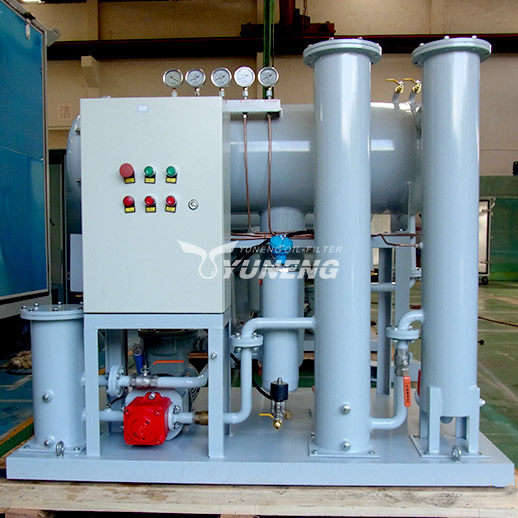
How Does a Lube Oil Purifier Work?
The presence of water in hydraulic lubrication systems poses a significant threat to their performance and longevity. Water contamination can lead to a cascade of detrimental effects, including:
- Oil oxidation: Water promotes the formation of free radicals, accelerating oil degradation and reducing its lifespan.
- Reduced oil film thickness: Water dilutes the oil, thinning the lubricating film and compromising its ability to protect metal surfaces from wear and tear.
- Oil denaturation: Water can disrupt the molecular structure of the oil, altering its viscosity and lubricity properties.
- Organic acid formation: Water can react with oil components to form organic acids, which corrode metal surfaces and contribute to equipment failure.
- Reduced dielectric strength: Water contamination can compromise the insulating properties of the oil, increasing the risk of electrical breakdowns.
To address these concerns, coalescing dehydration lube oil purifiers employ a multi-stage process for removing water and impurities from contaminated oil. Here’s a detailed breakdown of the working principle:
1. Precision Filtration:
- High-efficiency filter media: The initial stage utilizes high-precision filter elements with progressively finer pore sizes to capture and remove particulate contaminants like dust, metal fragments, and sludge from the oil.
- Multi-stage filtration: Depending on the specific purifier model, the oil may pass through multiple filter stages with increasing precision to ensure the thorough removal of even the finest particles.
2. Automatic Demulsification and Coalescence
- Coalescing filter element: The oil enters a coalescing separator equipped with a specially designed filter element. This element is typically made of a hydrophilic material with a multi-layered structure.
- Hydrophilic inner layer: The innermost layer captures and removes any remaining particulate matter using high-precision filtration.
- Demulsification and coalescing outer layer: The outer layer, specifically formulated for oil dehydration, exploits the surface tension difference between oil and water. Due to its higher surface tension, water droplets are preferentially adsorbed on the hydrophilic surface, while oil readily passes through the pores.
- Coalescing effect: Tiny water droplets captured on the filter surface coalesce into larger droplets due to intermolecular forces. This agglomeration process increases the size and density of the water droplets, making them easier to separate from the oil.
3. High-Efficiency Separation
- Hydrophobic separation filter element: The oil then flows through a final separation filter element made of a hydrophobic material. This material repels water droplets, further preventing them from passing through the filter pores.
- Gravity-driven separation: The combination of coalescence and the hydrophobic filter ensures that water droplets remain distinct from the oil. These larger droplets settle at the bottom of the separator under the influence of gravity, accumulating in a dedicated water tank.
4. Water Drainage
- Automatic or manual drainage: Once the water level in the tank reaches a pre-set threshold, the purifier automatically or manually discharges the accumulated water through a dedicated valve.
Additional Notes:
- Vacuum Dehydration (Optional): Some lube oil purifiers incorporate a vacuum dehydration system to further remove dissolved water and gases from the oil, achieving even greater purity levels.
- Filter Replacement: The filter elements require periodic replacement to maintain optimal performance. The specific frequency depends on the operating conditions and the type of oil being purified.
By employing a combination of precision filtration, automatic demulsification, high-efficiency coalescence, and hydrophobic separation, lube oil purifiers effectively remove water and impurities from contaminated oil, restoring its cleanliness, viscosity, lubricity, and dielectric strength. This process significantly extends the lifespan of the oil and enhances the performance and reliability of hydraulic lubrication systems.
The JT lube oil purifier developed by YUNENG is made of coalescence dehydration technology. This lube oil purifier can be customized according to your specific needs. If you want to know more, please contact us, the professional service staff will answer your questions in the fastest time.

